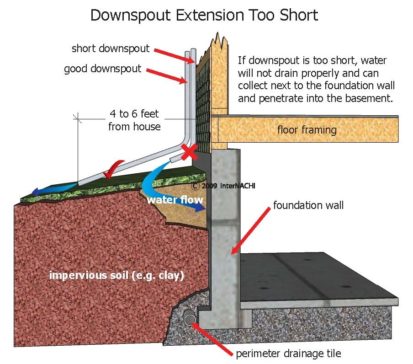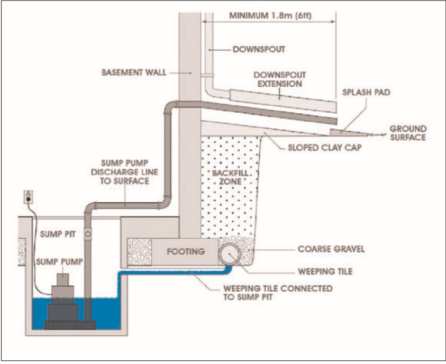It has been a wet summer so far with no end in sight. You may be noticing signs of water intrusion in your property or looking for ways to ensure that your property stays dry and comfortable.
Your home is constantly being tested by the elements and can use hundreds of gallons of tap water on a daily basis. If a home is well built and maintained then there is little need for worry. If this is not the case there could be excessive damage to your home including mold, rotting wood and structural damage. Your home need to repel water, have proper ventilation, have a dry and firm foundation and have plumbing that is free of leaks.
Exterior Moisture Problems
- Roof and Flashing
- This is probably the most obvious area for water penetration. Roofing materials can be damaged, blown off and wear out causing moisture intrusion. The most common area for leaks are around chimneys, plumbing vents, skylights and exhaust fans. Flashing and sealant joints can become worn and crack over time. Shingles have a life expectancy that can be lessened by extreme weather and sun exposure. Worn shingles can curl or crack making your home susceptible to water damage. Flat and low pitched roofs have their own challenges with drainage. Flat roof drains can become clogged increasing the risk of leaks and collapse if there is too much water on the roof.

- This is probably the most obvious area for water penetration. Roofing materials can be damaged, blown off and wear out causing moisture intrusion. The most common area for leaks are around chimneys, plumbing vents, skylights and exhaust fans. Flashing and sealant joints can become worn and crack over time. Shingles have a life expectancy that can be lessened by extreme weather and sun exposure. Worn shingles can curl or crack making your home susceptible to water damage. Flat and low pitched roofs have their own challenges with drainage. Flat roof drains can become clogged increasing the risk of leaks and collapse if there is too much water on the roof.
- Gutters and Downspouts
- Downspouts and gutters seem simple but are very important to your home. The nice thing about gutters and downspouts is that simple maintenance will alleviate some of the problems. Clogged gutters can force rain water back onto the roof under the shingles or travel down the inside of the wall or to simple collect at the homes foundation. If there is an insufficient number of downspouts then gutters could overflow. Downspouts that do not empty far enough away from the foundation can lead to water infiltration and over time structural damage.
- Soffits and Fascias
- Soffits bridge the gap between a home’s siding and the eaves. Soffits protect the roof rafters from blowing snow and rain. Fascias board is mounted where the roof meets the outer walls o the house. If either one of these are damaged moisture could get into the attic and into the interior walls.
- Landscaping and Grading
- Proper grading around your home is extremely important structurally. Water needs to be able to run away from the foundation to prevent deterioration and water intrusion. In a new build settling is rarely taken into account and back fill is rarely compacted.
- Flashing and Seals
- Windows that have not been installed correctly can allow water to leak into the walls. Damaged and missing weather stripping and flashing can allow moisture to penetrate the home around windows and doors.
- HVAC
- Like every other part of your home HVAC also needs regular maintenance. Proper maintenance will prolong the life of your equipment as well as reduce the chance of mold and potential moisture problems. Humidifiers should be monitored to ensure they are not adding too much moisture to your home which has the potential to lead to mold.

- Like every other part of your home HVAC also needs regular maintenance. Proper maintenance will prolong the life of your equipment as well as reduce the chance of mold and potential moisture problems. Humidifiers should be monitored to ensure they are not adding too much moisture to your home which has the potential to lead to mold.
- Sump Pumps
- Sump pumps help to keep your basement dry so it is important to ensure they are operating correctly. All water flowing into the sump pit is pushed away from the home. Sump pumps can become overloaded if water is not drained away from the home properly. If a sump pump is running regularly even when there is not heavy rain or melting could be the sign of excessive water build up under the basement floor from poor landscaping, gutter backups and other issues.
Now that you know how you can keep your home dry bring on the sun!
The post Managing Water Around Your Property appeared first on Edmonton Home Inspector | Admirable Inspection Services.
Comments
Post a Comment